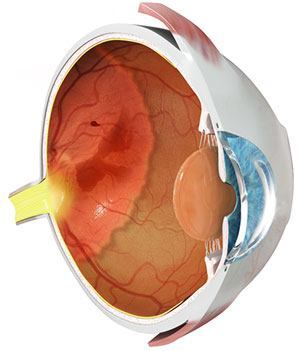66 Pacific Hwy
ST LEONARDS NSW 2065
Fax: 02-8412 0060

Retinopathy of prematurity (ROP) is a disease of the retina occurring in babies before the normal time of birth (premature). In this disease the retinal blood vessels are abnormal and scar tissue grows over the retina. ROP usually occurs in babies weighting 1.5 kg or less at birth and can be detected by an ophthalmologist, or surgeon by examination of the baby’s eyes.
Light enters the eye though the pupil and strikes the retina. In the normal retina lightsensitive cells (cones and rods) convert the light to nervous impulses; the optic nerve sends these impulses to the brain that interprets them as images. If ROP is diagnosed it means that the retinal blood vessels are abnormal. In many infants, the abnormal blood vessels shrink or go away without affecting vision. In some infants, however, moderate or severe loss of vision may result. This mainly occurs in a more extensive disease leading to distortion or detachment of the retina. Children with ROP often have nearsightedness, which can be improved by glasses. Lazy eyes (amblyopia) also are more common in children with ROP. Only a very small percentage of babies become blind.
The exact cause is not well understood. During the first few months of life, the retinal blood vessels in some very small, premature babies seem to develop abnormally. It seems as if the weight of the baby plays an important role in ROP. That means that babies weighting 1 kg or less at birth have a much higher chance of developing ROP than babies who weight 1.5 kg or more.
Due to the improvement of the survival chances of very small babies in neonatal intensive care units, ROP has become more common. Nevertheless, laboratory and clinical research has not yet found a way of preventing ROP.
Most babies with ROP do not need treatment at all. However, it may be necessary for an ophthalmologist to examine a baby frequently before treatment is recommended. It is very important to find out where ROP is located in the eye, its severity and its progress.
If treatment is recommended the ophthalmologist may use laser surgery (to treat a detached retina) or cryotherapy (freezing) to treat the side areas of the retina. Successful treatment can slow down or reverse the abnormal growth of blood vessels and scar tissue, and significantly lowers the chance of severe vision loss. Even with treatment there is still a risk of vision loss and the situation may require surgery later in life. Also, severe ROP disease (retinal detachment, glaucoma and misaligned eyes) may result in more complex surgical procedures that may include surgery later on in life. It is necessary to examine the eyes periodically, to ensure that the vision of the baby is developing as normally as possible.














